I’m always saying that if a gap in the market is obvious to one OEM, it’s obvious to all of them. Generally, if a manufacturer comes out with a segment-busting new model that sells like gangbusters, their rivals usually sit up and take notice. A while back the internet whipped itself into a frenzy over the ‘twenty thousand dollar’ Slate pickup truck, so does Ford’s big announcement yesterday that they are going to build a $30k truck mean they think there’s merit in the small, simple EV pickup idea, despite the small matter of Slate having not actually built the damn thing yet?
Ford didn’t specifically mention the Slate truck in their announcement, although they did cast a little shade in their direction by saying, “This isn’t a stripped‑down, old‑school vehicle.” I’ve not seen any of the Slate prototypes. At the Car Design Event in Germany I attended earlier this year, the chief designer was present, so I was hoping a truck would be as well, but all we got was a few 3D-printed scale models. I think I upset her by letting her know what I thought of the Slate website, but I remain unconvinced that a stripped-back, two-door, two-seat modular vehicle with wind-up windows will do the volumes necessary. Aside from the fact that mainstream customers have historically not liked bare-bones vehicles, the modular construction sounds like an NVH nightmare, something that will be exacerbated by EV propulsion because you will hear every single squeak and rattle. It all feels too much like the car internet enthusiasts SAY they want but won’t buy.
So it’s not surprising Ford is aiming for a higher price point. That ten-thousand-dollar price delta is going to give them room to maneuver to create a four-door truck with wider mainstream appeal that stands a much better chance of succeeding. They’ve already got their eye in with the Maverick, which, aside from some initial availability issues, has been a massive success. They’ve been building and selling trucks for decades, so they have mountains of customer research to base their decision on, which is always a better bet than basing your design on just vibes.
Plug And Play For Cars
Ford made a big deal about a new modular EV platform, but they are overegging the pudding a bit here. It’s been a long time since platform sharing meant a common floor pan and power trains. These days, a platform really refers to a common kit of parts and systems – not just suspension, engines, and gearboxes, but things like safety systems, HVAC, instrumentation, comfort and convenience features – basically anything under the skin can be shared.
Underlying structures can be manipulated for length and width with very few restrictions; usually, the firewall represents one of the very few fixed points that cannot be altered. The Maverick shares its C2 platform with the last generation Focus to give you an idea of how much can be changed. Variations of Jaguar Land Rover’s D7 platform underpinned nearly everything it built on both sides of the business until the Jags were culled last year. Volkswagen’s MEB platform is underneath all their electric ID cars (all variations of the same boring theme, I grant you), but also the new ‘Capri’ and the euro EV Explorer. So don’t be too dazzled by this part of their statement.
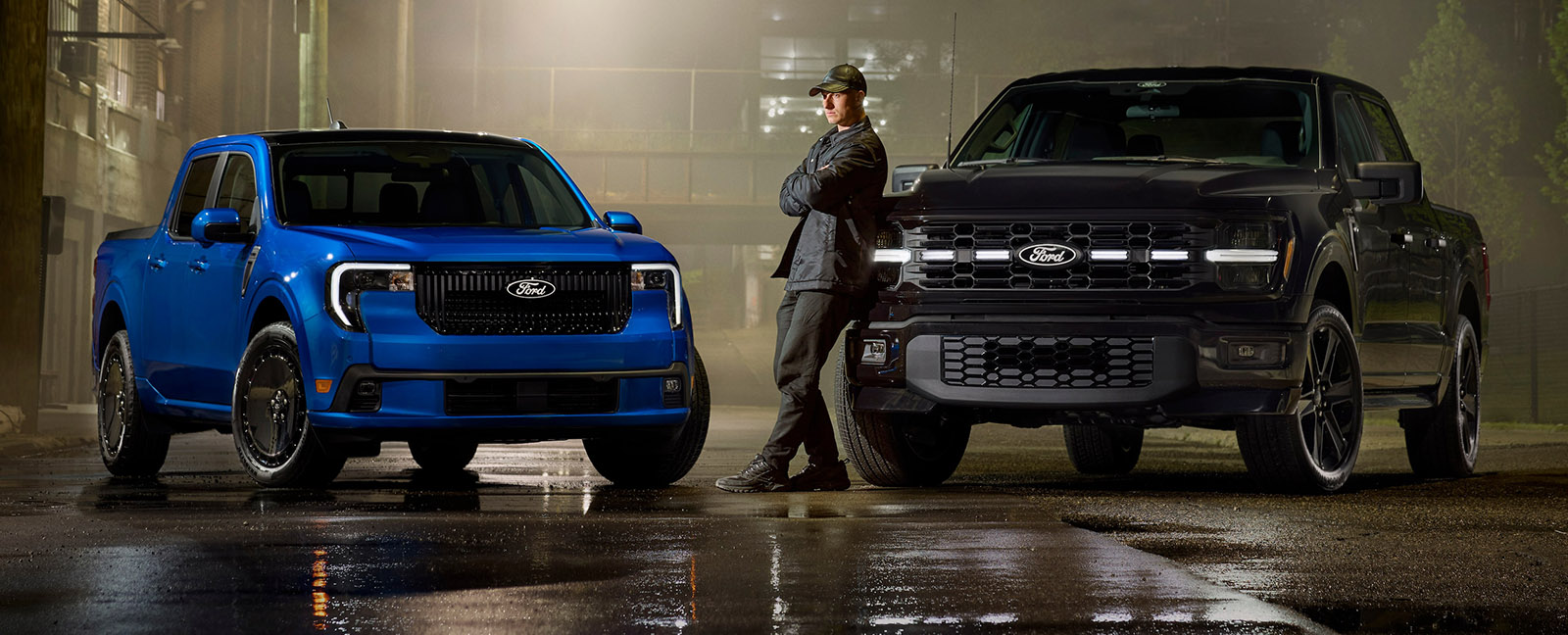
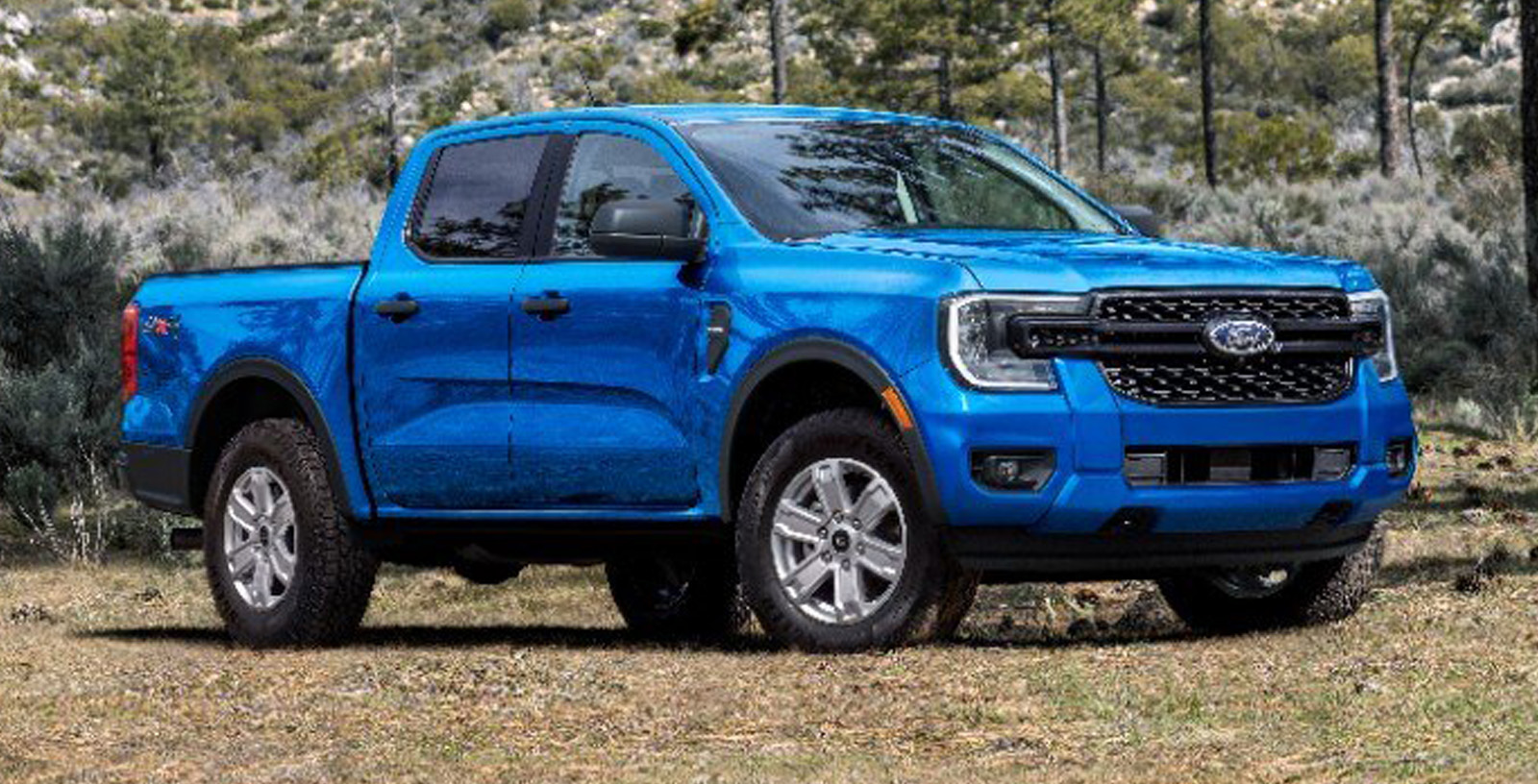
Whether they are aiming to blow the Slate out of the water or not, it’s clear Ford thinks they have room in their range for another truck. The Maverick is car-based for people who wouldn’t normally consider a truck but want to look cool or need the occasional utility. The Ranger is a smaller body-on-frame truck that’s available in the rest of the world (something which is beyond Toyota), and there’s the evergreen, full-size F-150 in ICE and EV versions. And so, an EV Maverick-type truck makes a lot of sense because the C2 platform is not capable of being electrified.
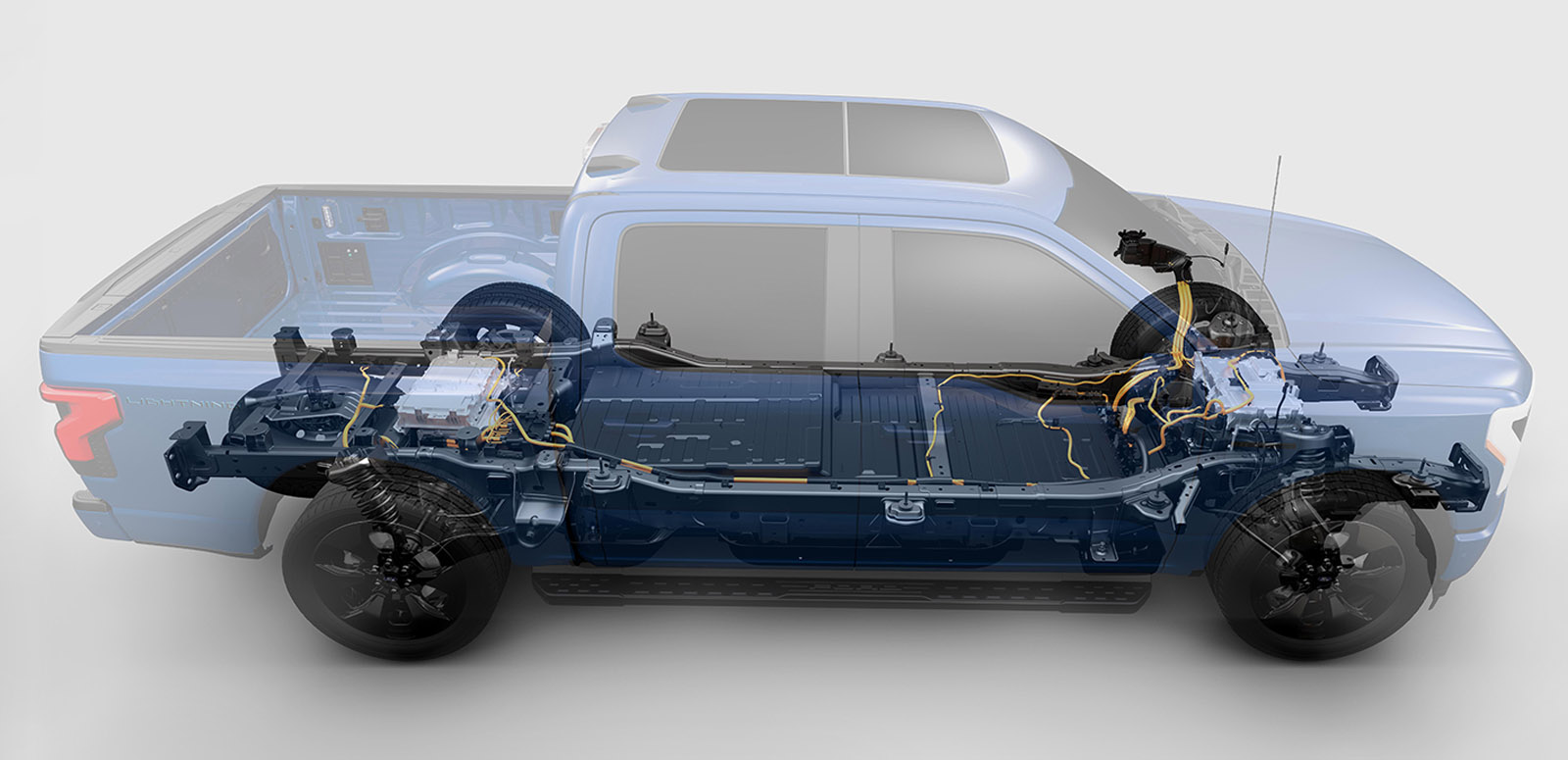
With the F-150 Lightning, they simply took the existing truck, yanked out the engine and gearbox and stuffed the space between the frame rails with batteries. It sounds like a compromise, but this approach has benefits. It’s more cost-effective because you are not designing and building a whole new platform (which costs billions of dollars), and it remains the familiar body-on-frame F-150, which is important for those customers.
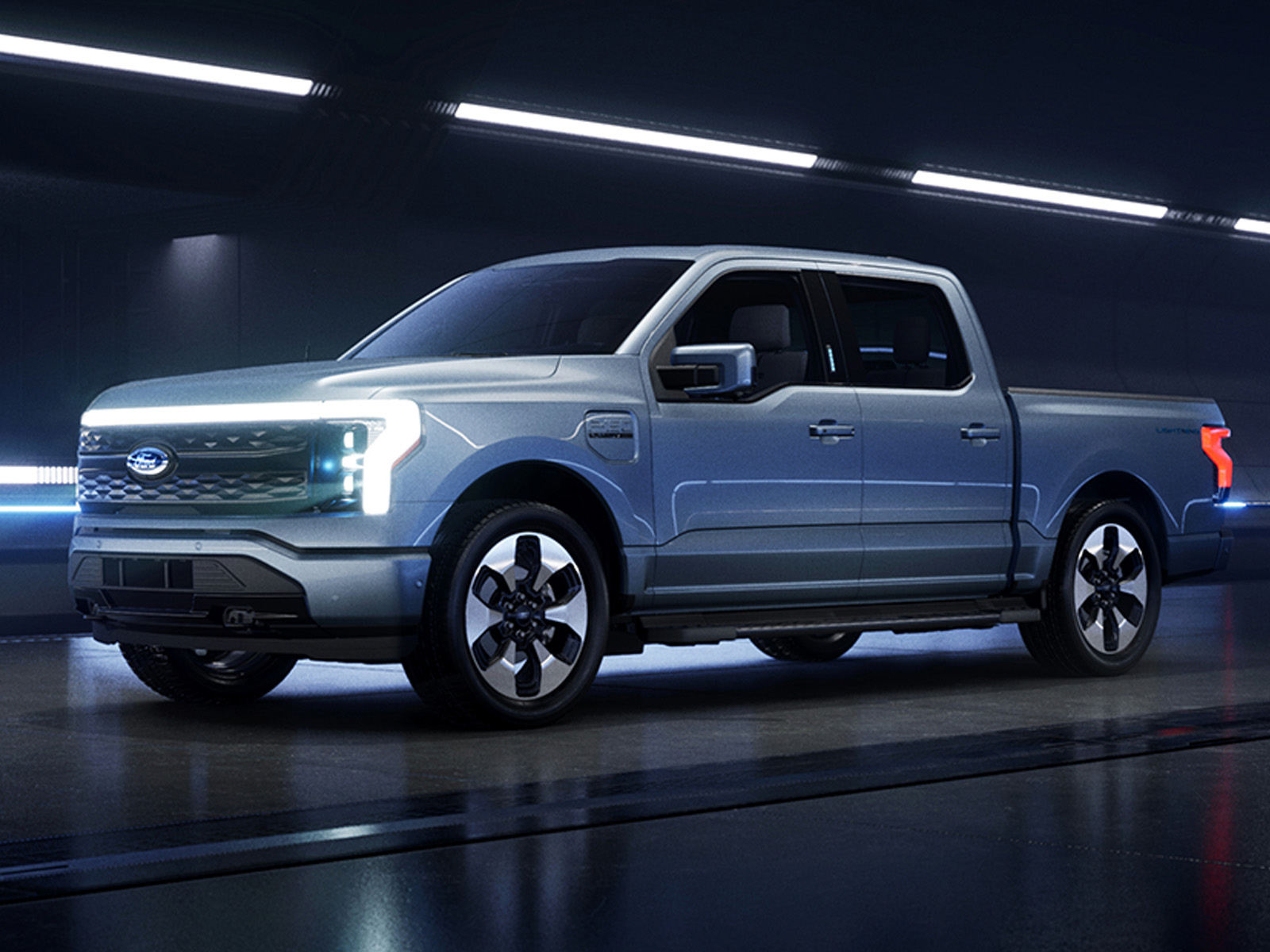
Aero And The Bill Of Materials
The headline-grabbing $30k price point for the new truck is going to take some cute engineering to hit. It’s extremely likely that part of the problem with the Maverick was Ford initially underpricing it – they won’t make that mistake again. It’s a safe bet this new truck is not going to be aimed at the heartland F-150 customer, so what do we think it could look like? I’ve written before about how fewer and simpler parts help lower the Bill of Materials (the total cost of all the parts in a car), but here we must deal with the specter of aerodynamics. Aero efficiency is more important for electric vehicles because it makes up something like 80% of their overall efficiency. With ICE vehicles, this number is much lower at around 30%. So even though a truck might not appear to be the most aerodynamic shape, the reality is aero count is gained and lost by things like flushness, sealing, and as few openings as possible. Another factor to consider is that drag doesn’t really come into effect until about 40-50 mph. The Lightning’s drag coefficient doesn’t seem to be available, so it’s probably not particularly good, but the Defender (which is an apartment block) has a Cd of 0.38.
Here’s a side view of what I think the new Ford EV truck could look like. I started off using the Maverick as a base and then extended the bed rearwards. We don’t know if it will have a bigger bed or not, but Ford mentions being able to “lock your surfboards or other gear in that bed – no roof rack or trailer hitch racks required.” I watched Point Break the other evening, and that’s about the extent of what I know about surfing, but a quick Google reveals boards seem to start at about seven feet long. Maybe the new truck is going to have some sort of midgate?
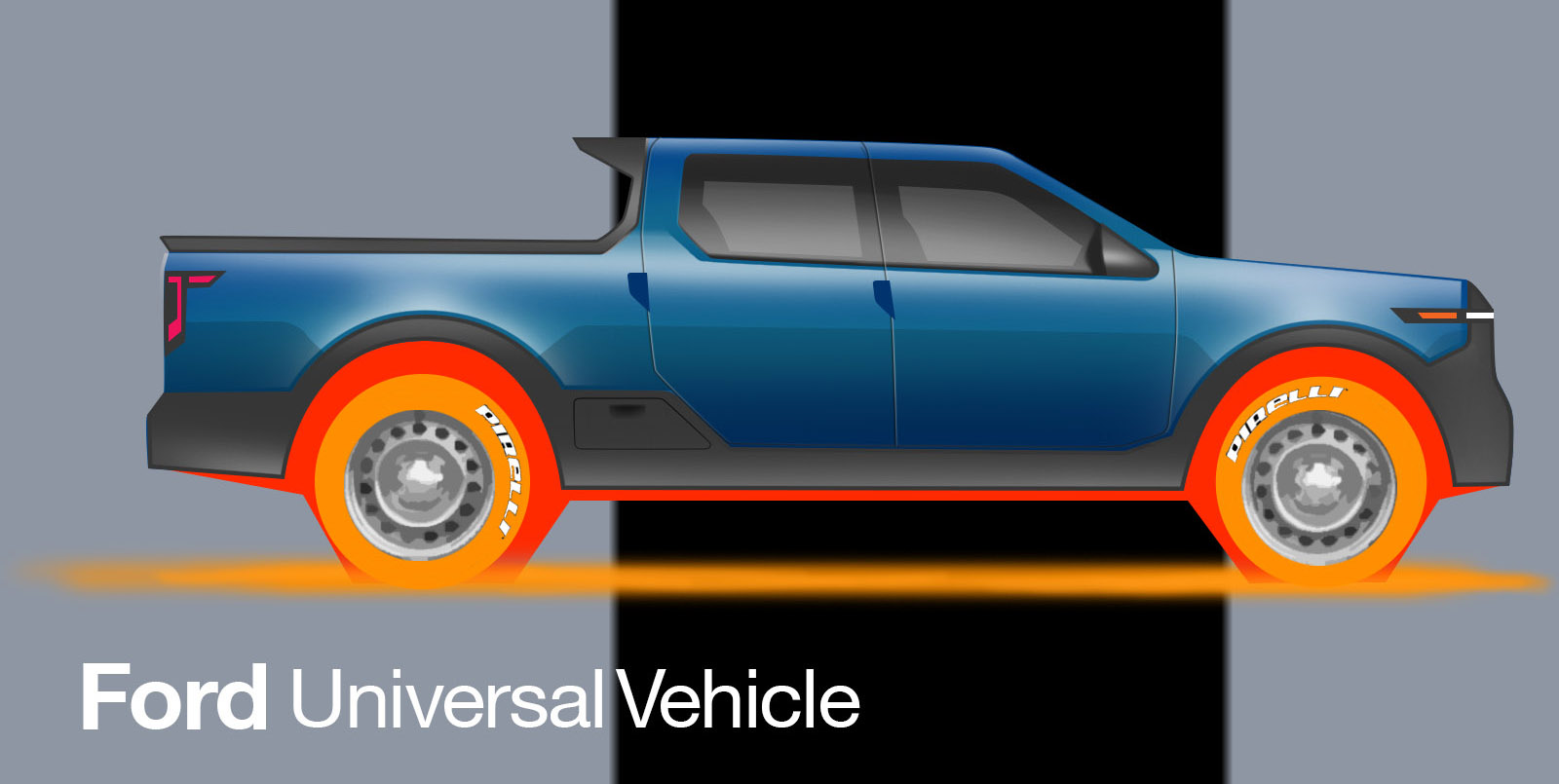
Another thing Ford specifically mentioned was a frunk, so I’ve pulled the nose forward a bit to make sure there’s enough real estate for one. What this also allows us to do is pull the base of the A-pillar forward so the windshield can be laid back for better aero, a trick GM pioneered with the third-generation F-bodies.
People complain about pop-out door handles being an unnecessary complication, but they do provide an aero benefit (flushness, remember) andan element of what design wankers call “surprise and delight.” However, here they’d be an extravagance considering the truck’s low base price. And so, I’ve stolen the recessed door handle idea from the OG of smart cost saving, the 1980 Fiat Panda. Seeing as we’re building on an all-new EV platform, we know the battery will form a structural element in the floor, so I’ve added a small locker to utilize the space between the rear doors and wheel arch. Into the bed molding, I’ve added a small spoiler to help the air flow off the back of the cab.
As you can see, there’s a lot of unpainted polypropylene around the base of the truck, and I’ve incorporated it into the front facia as well. This means less cost because you don’t need to paint it, and smaller, simpler body stampings. I’ve also made the doors a big one-piece stamping that runs all the way up to the roof and A-pillar, saving additional stampings to cover these areas. This is similar to what Dacia does, another low-cost car.
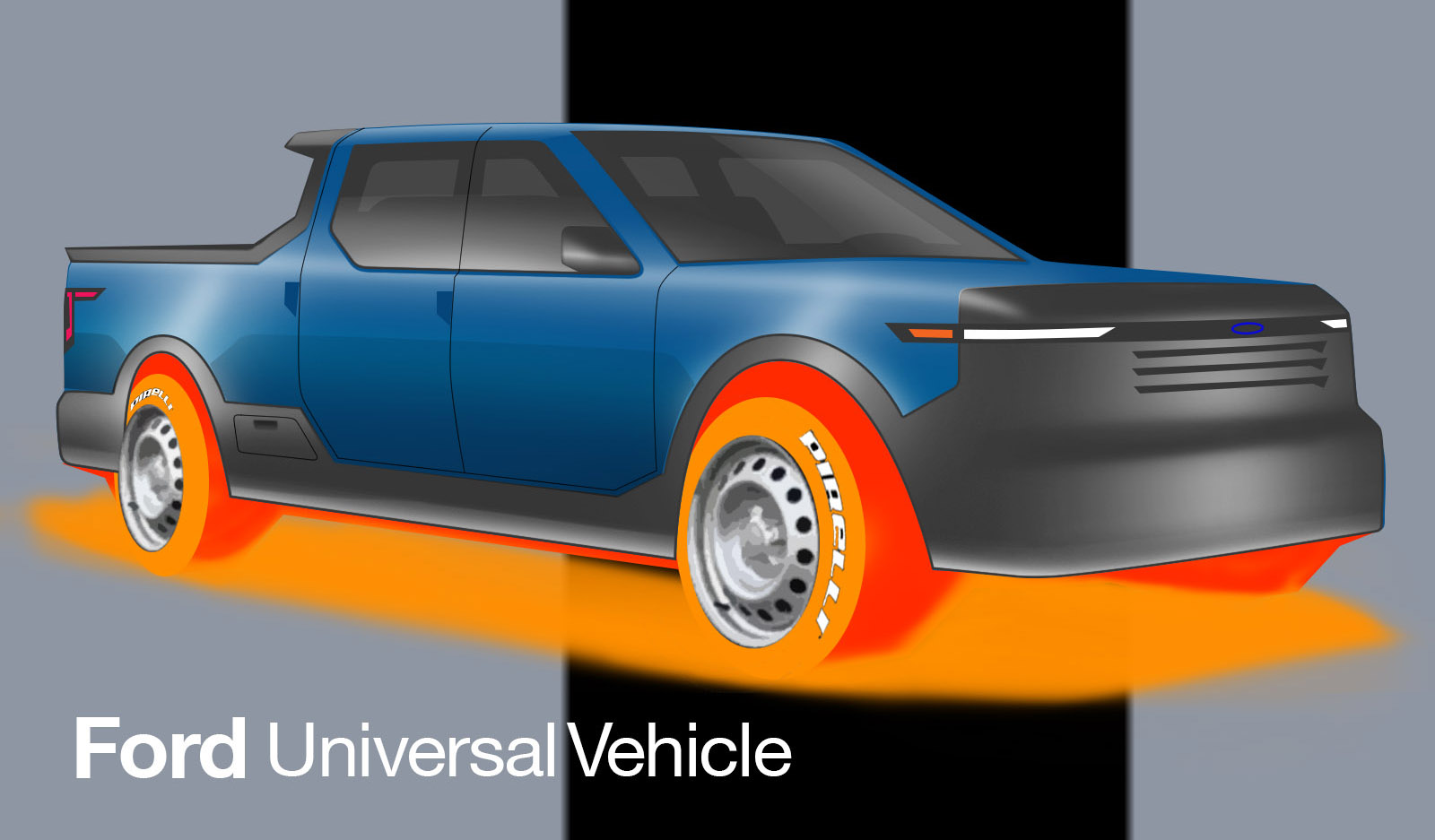
Moving around to the front, again I’ve kept it quite simple. I’ve imagined the light units as one integrated unit that wraps around the corner and incorporates the federally mandated marker lights. It might seem like a small thing, but a dollar or two saved soon adds up. There are some vents molded into the fascia to give a grill effect, but this is more for familiarity and to break up the expanse of unpainted plastic. At the base of the A-pillar, I’ve integrated the mirror housing into the sail panel that would normally occupy this part of the window. Mirrors are a major pain point when it comes to aerodynamics, and the US hasn’t legalized rear-view cameras yet, so this seems like one conceivable way to improve airflow and, again, reduce part count.
The Not $30k Version
Alright, that’s the $30k version. What might the one people actually buy look like? I’ve painted the cladding to match the body color and subtly simplified the front graphic. My thinking here is that retail customers (as opposed to business customers buying the cheap version) might want a slightly more sophisticated and modern appearance. Also, going by the one image we have from yesterday’s announcement (below), it looks like the new truck is going to have a remarkably simple front facia.
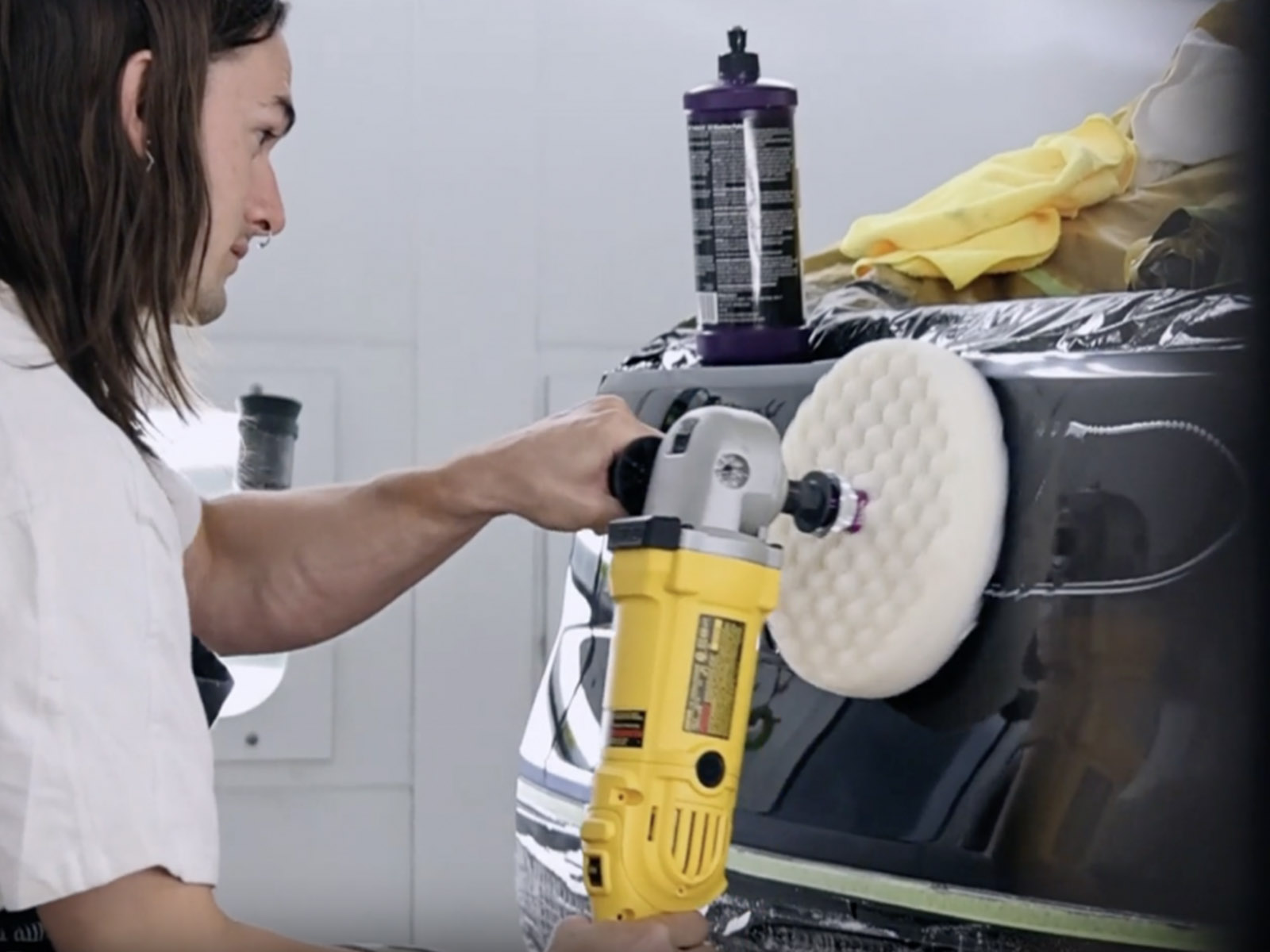
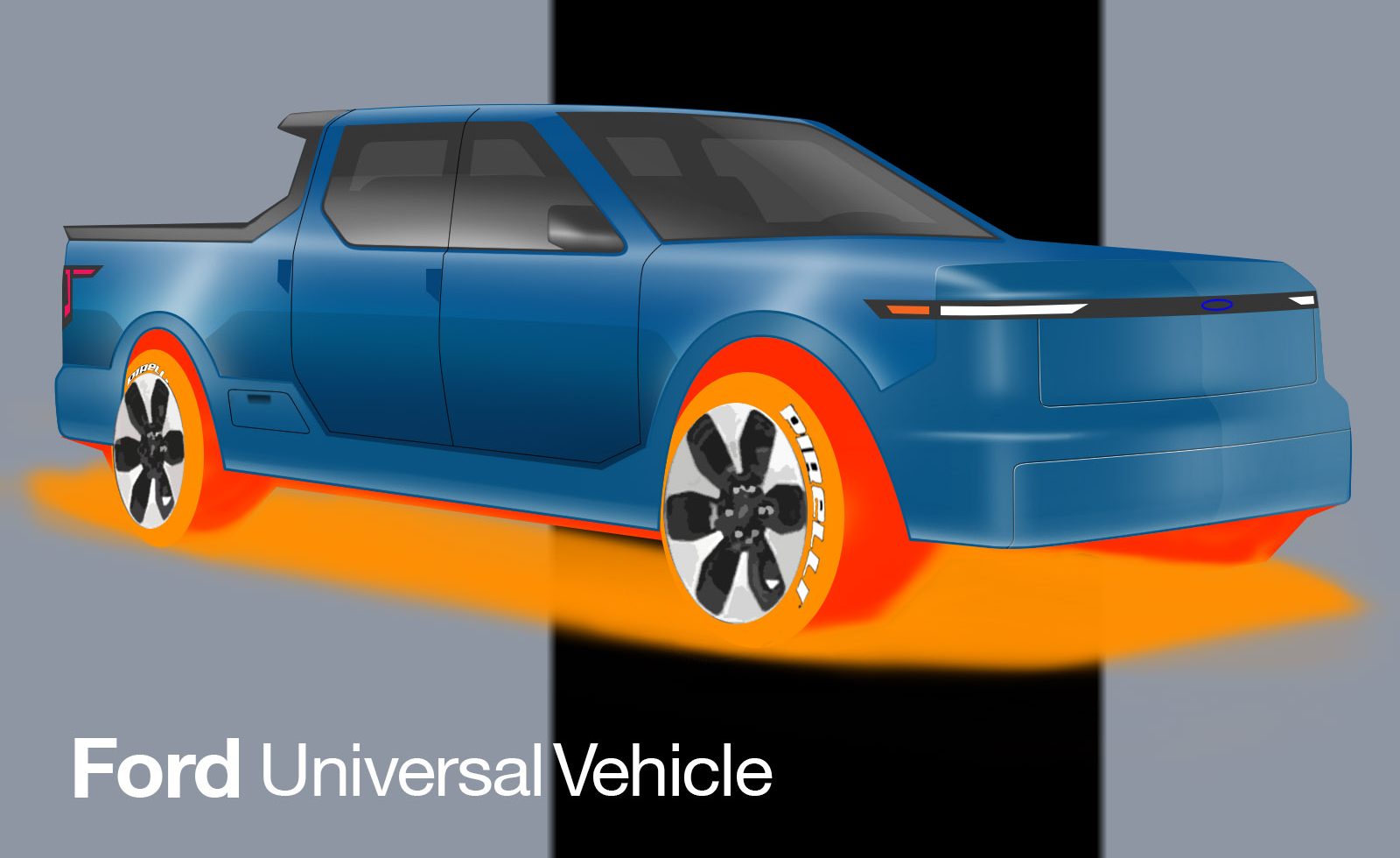
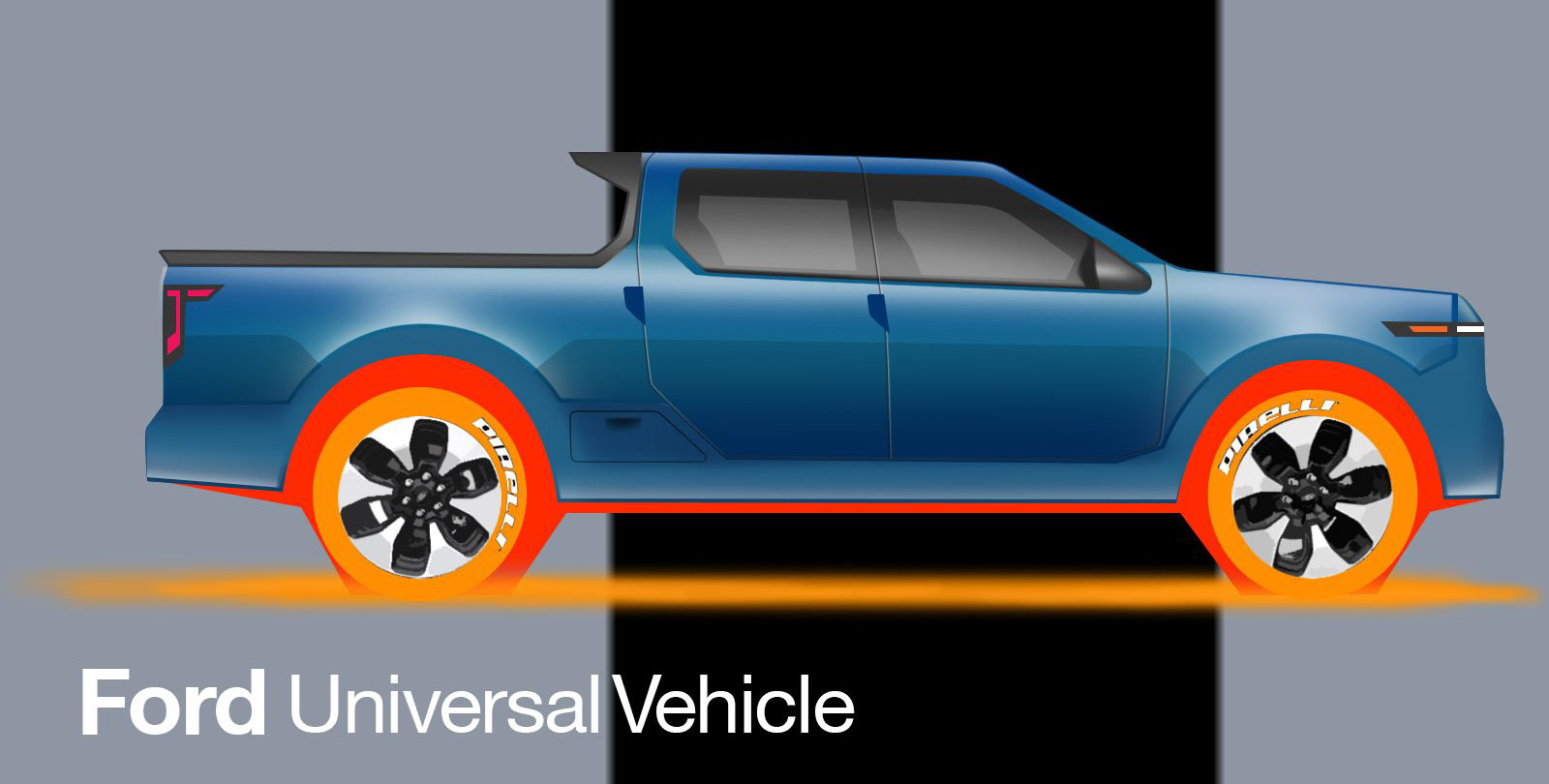
Ford hasn’t given us much to go on beyond teasing generalities, so this is all pure speculation. But hopefully it will give you an idea of the challenges they are going to face and how their truck might differ from the Slate that got everyone so worked up a few months ago. I’m sure if Ford can manage even half that amount of buzz, they will be more than happy.
And if their new truck isn’t for you, they’ve got three other models.









Are you sure the tires aren’t Goodyears?
https://assets.dyler.com/uploads/posts/303/images/6710/life-magazine-photos-from-the-goodyear-glow-in-the-dark-tire-experiments.jpg
Am I the only one that’s still dumbfounded by the audacity of building an efficient EV and then slapping the most un-aerodynamic body on it?
BUILD A CHEAP CAR, YOU MORONS!
And then bragging how their new EV platform will permit designing different vehicles on it but not actually doing it at all.
Lighting platform – only 1 pick up body style
Mustang Mockery platform – only 1 crossover
They even made a crappy pick up out of Focus, and then killed all vehicles based on that platform that are not crappy pick up body styles
Per the announcement the truck is only the first vehicle. A 2 row CUV, 2 row CUV coupe, 3 row CUV and van will follow.
No point of making a new skateboard that various bodies drop on if you aren’t going to build various bodies for that skateboard.
They have to go where the volume is.
Apple took away our headphone jacks, a 50 year old standard, and told everyone to get bent. Shortly after, the headphone jack disappeared from everything.
Like Apple, Ford used to lead the way, creating new market segments and inspiring copycats, and they could do it again. They just need a little courage.
…Ford hasn’t lead the way in ages.
It’s hard to argue against the Maverick and F-150 Lightning.
I would like to formally congratulate Adrian for designing the Ford R1T: Proletariat Edition.
A Rivian for the Common People!
I studied design at the Royal College….
Everyone has a downfall.
You missed the joke. But going to the RCA certainly was not a downfall. exactly the opposite. It was a huge achievement.
Was the $20k Slate not announced back when the tax credit was available with that included?
Yes.
So, with the tax credit gone (in August was it?) you can expect a base Slate to cost about $27,500 to start. Before option, tax, title, and registration of course.
Some states have their own incentive programs, as do some local electric power utilities… I think SoCal’s Dept. of Water and Power used to chip in a grand or two for EV buyers, but I haven’t checked their website in a while.
States tend to use tax credits (just like the Federal gov’t does/did) so not every buyer will qualify for that, since not every buyer has the annual tax liability necessary to offset the credit. Local power companies tend to go the regular rebate route (IME) so at least there’s that, if you happen to live where that’s available.
I’ve got deposits down on both the Slate and Telo, but am far from certain that I’ll buy either one. Of the two, I tend to prefer the Telo by a fair margin, but even their base, work truck model might wind up being more truck than I personally need, and cost more than I’d like to spend on a small EV trucklet.
I’m not a Ford fan at all thanks to the events surrounding the Maverick release, and their habit of making a lot of frequently recalled, plasticy, wet-belt crap in recent years doesn’t help. With that said, even if they manage to release a $30K MSRP electric truck by 2027 (I won’t hold my breath) their dealerships will once again be tacking on another $10K minimum, so the base truck will cost $40K+ (closer to the high forties with tax, registration, and title) and the mainstream model will surely change hands in the $50-60K range.
At those prices? Big whoop.
While I’m on a curmudgeonly rant: peak auto seems to have been late 80s to early oughts.
looking at the Ford polishing photo, it seems the hood is open and the angle of the right front panel from the bumper to the A-pillar looks relatively steep for a truck.
plot twist – the surf boards will be loaded through the frunk and pass through like a Bollinger
This is what I’ve come to think as well. I just don’t think the general public is interested in a stripped vehicle they’re expected to customize themselves.
If Ford can pull this platform off and actually give us a range of EVs in multiple body styles all priced roughly around the $30k mark without any tax incentives, I think they’ll sell extremely well.
This is exactly what Toyota were trying to prove with the Scion brand, and it turns out; no, most people don’t want to do that. I specifically enjoyed the hell out of it, but clearly do not fit into the “normal” demographic of automobile buyers.
Exactly. I also like the Slate, but I’m far from the average car buyer. I started to have my doubts when I realized the only people who seemed excited about that company were car dorks.
I seem to recall there was an additional problem with the Scions. They were targeted towards young drivers purchasing their first car (high school to college age range) but everyone’s grandparents ended up buying them because they were less expensive Toyotas.
When your grandmother is driving the same car as you, it is by definition no longer cool or hip, and sales plummeted.
You’re not wrong, that was the core of the have it your way menu of parts, the fellow kids all wanna be special and different!
The problem is none of their target demographic could actually afford that. I was barreling towards mid-30s at that point in my life.
The law of unintended design consequences. If Toyota had half a brain they should have recognised this as a potential problem. Ford EU had the same problem with the Fiesta based Fusion.
The way around it is clever marketing and or designing older people out by making it hard for them to use.
Other than making the Ingress/Egress experience challenging (low seat to ground height and poor leg swing clearance, such as the original Countach) how do you do that cheaply? The two ways to scare the elderly away from the vehicle is make it hard to get out of or make it complicated to use, and the latter requires putting expensive tech toys into the vehicle.
Even compromising the Ingress/Egress experience would have driven off some of the target audience, but it at least would have gate kept against them becoming “uncool” on the grounds that grandma was cruising town in the same whip as you.
Ford still has time to Farley it up.
Ford exited the small car market (Fiesta, Focus, Fusion) because these vehicles were not profitable – keep in mind these were traditional internal combustion engine vehicles, legacy manufacturing, and well known processes. Now, Ford wants to re-enter the small vehicle market with an electric vehicle – which we know costs far more than a traditional combustion engine vehicle. They aren’t going to be able to pull this off without a massive sacrifice to quality and safety – which given Ford’s track record with warranty issues and recalls does not bode well for FoMoCo.
The other main reason the Fiesta was killed was because they needed the line in Cologne to build the “Capri’ and Explorer, which is beginning to look like a bad bet.
They made a stupid pick up truck out of Focus and then stopped production of everything that is not a stupid pick up truck.
I call BS that Maverick is profitable. it is based on Focus yet Focus was not profitable.
Stupid
The last year of full sales the Focus sold 113k in the US and was on a downward trajectory everywhere else. It’s possibly it wasn’t profitable at those volumes. The Maverick was at just over 130k last year in the US alone and despite being on the same platform (which is probably amortised by now) is a much more rigorously costed vehicle. The margins are tight in this part of the market and volume is key to profit.
Adrian,
Please render this as a 2-door, maybe with a longer bed option and send it to Ford. Then it might be worthy of the Ranchero moniker. As a regular cab, it could be the $27K Ranchero Classic option.
Not everybody wants or needs a 4-door pickup. As the owner of both a 2wd 2-door 5-speed GMC as well as a 5th-generation El Camino, I can attest to this. The only reason some people are buying the Colorado/Canyons and Rangers as 4-doors is because the manufacturers took away the 2-door options. Then they priced the full-size 2-doors higher than they should be and when they discontinue those they’ll claim the take rate was too low.
Also, thanks for not making this another AI article about the new shared platform.
Two door regular cab long beds do not sell these days, even the extended cabs are rare below the full sized trucks because the majority of consumers want more cab space even at the expense of bed space.
I looked into getting a Maverick hybrid when they were still reasonably priced. ($20K) Then the ordering window disappeared, Then the 2nd year you only had 10 days out of the year where you could order one, but by then, all the recalls were happening… So now if you want a hybrid it’s closer to $30K than $20k.
And honestly, the wife & I would rarely utilize the rear seats. I prefer a full height lockable bed cap. I haul stuff like lawnmowers in the summer and snowblowers in the winter to help family members with their lawns and driveways. Those both fit in the 6-foot bed of my GMC inside the topper. I also haul 4X8 sheets of drywall, pegboard, etc.
Where I live, I see a lot of regular cab pickups driving around daily, but they’re mostly old and rusted out since nobody makes an economical replacement for them. If manufacturers still made regular cab models, put them in the showrooms, and charged significantly less than the full-size crew-cab models, I bet you’d see more of them around.
As it is, a 2025 regular cab absolute base model 2wd Silverado is $40K. A 2025 regular cab base model 2wd F150 is almost $41K. That’s just too much to pay for a base-model pickup. When we bought our house 15 years ago, it was only $42K. And that was for a house.
We ended up buying a 2024 Chevrolet Trax LS with a couple of options (LS Convenience and Driver’s Confidence packages) for an out-the-door price of $23K last year and just kept my old rusted-out regular-cab GMC for hauling stuff.
Do you like the Trax as a commuter? I think it looks great, especially in Campagnola green, and 23K seems like a bargain for reasonably dependable new car warranty transportation.
We bought it as a retirement road-trip vehicle, so we don’t really commute with it. We ordered it 2 years ago and got it in January of 2024. We’ve taken it on a few road trips. It’s got about 5400 miles on it so far.
We like it. Ours is the somewhat rare Blue Glow color, which was only available in 2024 and only on LS and LT models. Not sure about Campagnola, but the green in the US is called Cacti Green. We wanted the gauges in the dash over the touch screen, and we wanted silver wheels, so we bought the LS. It only came with cloth seats, so we bought some aftermarket imitation-leather seat covers for it to protect the upholstery for the times we end up eating in the vehicle while on road-trips. The seat bottoms are a little thin, so sometimes we get a little sore, but only after 3-4 hours. I plan on adding some memory foam under the seat covers before our next road-trip to see if that changes anything.
We’ve been averaging around 33 mpg on 87 octane fuel. I do fill the tank with no-ethanol premium fuel if we’re going to store it for the winter.
Another plus is that the stealership tossed in the WarrantyForever™ lifetime powertrain warranty in the MSRP so we also have that, however reassuring it is. Which is somewhat of a bonus, as it will be 3 years old next year, but we won’t be anywhere near the 36,000 miles of the factory bumper-to-bumper warranty. GM’s powertrain warranty is 5 years/60,000 miles, and again, we don’t plan on hitting 60K in 5 years, so we’ll see how this free 3rd-party lifetime warranty works out.
You’re still looking at a $5k savings going with the regular cab vs the crew cab for a base F150 XL. Seems about right.
Trucks have gotten so much safer, capable, and longer lasting than when they were ‘cheap’. Squarebody Chevys and dent-side Fords were quite affordable, but they were only designed to last 4-5 years, and came with a 5 digit odometer for a reason. Now, it’s very rare to see a truck less than 10 years old that’s falling apart.
I don’t think any manufacturer could build a 2-door truck cheap enough for private citizens to buy them new in any quantity.
Looking at sales volumes:
3% – Regular Cabs
12% – Extended Cabs
85% – Crew Cabs
My view is that one of the reasons so many crew cab trucks are sold is because that’s what dealers order to have in stock, so that’s what’s on the lots or in the showrooms when people go in to buy a new truck. When was the last time you saw a new regular-cab in the showroom? Or even out in the lot? If there were more in stock, there would be more than a 3% take rate. The dealerships stock what makes them the most money, not necessarily what’s in the best interests of their customers.
Silverado/Sierra and F150/250/350 on up are pretty much the only trucks available in a regular-cab layout, and most of those have to be special ordered since dealerships do not stock them.
Ram, Tundra, Colorado/Canyon, Ranger, Maverick, Honda, Hyundai trucks are only available with 4 doors so that’s what people end up with.
I was a little excited when I heard that Toyota was bringing back the 2-door Tacoma this year and offering a 6-speed manual… But then I found out that the combination was not available in the same truck, which is somewhat dumb on their part. I think there are a lot of old (and some young) guys (and gals) out there who would prefer to drive a 6-speed manual regular cab pickup, and the Tacoma version even has some in-cab extra storage, as it’s like a little extended-cab, but without the rear doors. Too bad it’s automatic-only. If you want the 6-speed manual, you have to opt for the much pricier crew-cab model.
So close…
BTW, every truck I’ve owned (other than my El Camino, which is an automatic) has met the requirements of the 1-2-3 rule for pickups:
1 row of seats.
2 doors.
3 pedals.
There are 6,757 new regular cab F-Series trucks (150, 250, 350) on dealer lots right now. So no – they aren’t special order.
There is no grand conspiracy. Dealers stock what sells. Automaker make what sells.
In general low volume trims / options get cut when it is time to redesign a vehicle or meet updated crash or emission regulations. A lot of the trucks you mention above used to have regular cabs – which didn’t sell, so they got cut.
I’ve personally been involved with a product development cycle where we dropped a manual option. It was less than 5% take rate and accommodating the manual was going to add cost to the automatics – eliminating the profits from selling the manuals. Sorry but the object of a company is to make money – not fill every little niche market segment.
Added to the fact that to have a vehicle sitting on the lot COSTS a dealer money in floorplan. So they won’t stock what doesn’t shift.
Correct – and something that most people don’t think about. Every month a car sits on a dealer lot it cost that dealer money that they don’t recover.
Can I interest you in a Slate Pickup in these trying times?
As noted in the comments elsewhere, people outside the industry don’t have the knowledge to know why certain models/trims are kept and others are axed. Obviously there’s a profit motive, but where’s the line? If there was enough interest in 2-door “regular cab” small pickups, we’d have them on sale. For whatever reason, there isn’t enough interest to make it worthwhile to automakers in this country.
The only regular cab/long bed trucks I sell are of the Super Duty variety, usually for snow plowing or fleet use.
Not to discount your personal experience (as a matter of fact, I applaud it), but, in 15 years of selling Fords, I’ve sold exactly one regular cab F150, and it was over a decade ago. Admittedly, they might be a tad more common out in the sticks, but still.
I think I’ve determined if an article is AI-generated or not simply by looking at the author listed at the top. If they can’t bother to show the author’s full last name, it’s probably BS AI. 🙂
Regular-cab F150s are still common fleet vehicles up here in Ontario, but the extended cab is definitely taking over. Even as someone who works as a builder, the occasions where an 8ft bed is critical vs a 6.5 are exceedingly rare. At that point you’re better off with a van or a trailer anyways. Even for fleets, the ability to carry 4+ passengers is much more important.
The only regular cab trucks I’ve seen that were clearly purchased *new* for personal use were on road trips down through the US.
I saw a few retired guys with pristine F150 XLs, presumably purchased as a sort of ‘dream car’, for use around the ranch and trips to the home store and garden center.
The Slate was going to be $27,500, not $20,000. The $20,000 number assumed that the $7500 tax credit applied, which is gone now. When Ford announced the Bronco and the Maverick, both had unrealistically low starting prices and both have risen in price by nearly $10,000. And don’t forget their delivery plus acquisition fee, which is just part of the price. Making those charges a separate line item is meaningless if they’re mandatory. I suspect Ford is once again playing games – announcing something without actually having anything to show, no developed and engineered product. So it’s all just talk. And based on their very obvious bait and switch tactics in the recent past, I’d say this new “Model T moment” announcement is worthless. Talk is cheap, wait until they actually do something.
The Model T moment is attributed to the new assembly line methodology and modular platform more than the specific initial vehicle.
Kind of odd how few people seem to realize this. The truck is going to be nothing more than a proof of concept for the platform/manufacturing process.
FWIW I wish this site had focused more on the actual point of this announcement (which is actually kind of a massive deal) and less so on this nebulous truck, because people just seem to be getting confused.
This – so much this. The Model T was a universal chassis that you could drop a coupe, convertible, sedan, van, truck, etc body on or send it to your local coach builder for a custom body. You could go to a junkyard, buy a different body and swap it to your chassis.
It seems Ford is talking about making a real skateboard – something that as been talked about for decades but never actually done.
The issue is people think (and OEMs do little to dispel this) that an EV platform is just cells and motors, when there’s on board charging systems, cooling, heat pumps, control unit and all manner of other crap that has to be packaged – hence small EVs not having frunks.
Very true. The cooling system is an excellent example. EV cooling systems are far more complicated than an ICE system.
This is a fair comment, but people were getting excited over the $20k figure without taking everything else you mention into account.
The price point is definitely a farce that only exists to excite investors.
“So it’s all just talk. And based on their very obvious bait and switch tactics in the recent past, I’d say this new “Model T moment” announcement is worthless. Talk is cheap, wait until they actually do something.”
Hey, this has approach has historically worked out well for Tesla. Why shouldn’t Farley jump on the BS Bandwagon?
Well Elon and Henry senior were both terrible people who wanted to impose their views on society so there’s that.
If I were Farley I’d try to avoid that part of Ford’s history.
“And so, an EV Maverick-type truck makes a lot of sense because the C2 platform is not capable of being electrified.”
Why is this? You stated that the C2 underpins the last generation Focus, but wasn’t there an electric version? Or am I misremebering?
There was. It was a compliance vehicle basically, not built in any kind of volume, and they weren’t purpose-built as an EV. They only had about 75 miles of range.
Also CX787 (Mach E) is just a modified Escape platform.
The Mach-E uses a C2 derivative, so it is capable of being electrified. Probably not at the efficiency or cost this is targeting, but still.
C2 is the successor to C1, the Focus Electric was only a C1 platform the final C2 Focus for Europe and the rest of the world apart from U.S. and Canada did not have an electric variant
Okay, but what is it about the C2 platform that precludes it from being electrified? I’ve wondered why there’s a gas version and a hybrid version, but no full electric version.
That I don’t know, they already for a 14.4kWh battery in the Escape PHEV, but seems that they either didn’t want to or can’t fit anything larger, and only the Lincoln Corsair GT PHEV gets the e-awd with a third motor in the rear separate from the dual motor hybrid set-up
I mean it *could* be, anything is possible with enough time and money. But it wouldn’t be remotely competitive because it would just be too compromised by the little amount of cells you’d have to Tetris into it.
I feel like it might be slightly smaller than the Maverick as it doesn’t need as big a footprint for the rule, the existing hood length of the Maverick will have a big enough trunk compared to like a cyber truck, and if they do a mid gate the existing 4.5 foot bed should do ok to hold longer things.
I just don’t get why with the Maverick their first thing out is an ev truck, and also where it’s GM with all this? That’ll be 2 smaller trucks from Ford with no response from GM. The Sierra and Silverado EVs combined outsell the Lightning so they’re well in the ev truck market too, give us an S10 electric again!
Footprint rule technically still matters for EVs insofar as how it offsets the fleet fuel economy as a whole.
Can’t wait till Ford releases their 30k truck for the bargain price of $40,000.
Well, like the $20k Maverick, it will technically exist for marketing purposes, just be difficult to get one since they will prioritize manufacturing for higher trim/higher margin models, so the absolute base trim/zero option trucks will be few and far between, and then dealers will slap them with addons and markups anyway.
Ford has also suggested this entry level 30k truck will only have a ~50kWh battery. For comparison, the little nugget Chevy Bolt had 65kWh. That’s pretty small, and pushing a truck, even a compact one with reasonably good aero, I’d have to expect a real world range of only about 150 miles (assuming 3mi/kWh), or a 10-80% “road trip range” of a paltry 105 miles. That’s firmly in “city car” territory and I suspect most people wouldn’t consider acceptable for anything beyond a secondary grocery-getter car- and for that, you don’t need a truck. A larger pack is all but certain, but will also certainly come with a substantial upcharge, or tied to higher trim packages. Not to mention you could just by a hybrid Maverick (for actually 30k) that will do >40mpg and eliminate any concerns about range/charging.
So I suspect you’ll be right. It will technically start at 30k, but they’ll barely make any of that variant because they know nobody will buy one.
When the 986 Boxster was released it was technically possible to buy one for £34k. It was on the price lists and everything…..
Anecdotally, a larger percentage of the Mavericks I see are in base XL trim than F-series trucks. The Maverick XL is actually pretty well equipped, whereas the F-series XL is pretty basic, and not available in many of the body and powertrain styles.
F-150 also has a bit more trim fidelity such as the fairly common STX which is basically an XL High plus a bit more XLT thrown in.
I do think it’s going to be very, very similar to the Maverick in size, form, and function. And a midgate is likely based on what’s been said, but you can bet your ass that won’t be available on anything other than the highest trims, there’s no way Ford is going to provide us a 30k EV truck with a midgate. Honda can barely provide us a base model Civic for that these days.
In reality, I’m gonna assume that this will be pretty close to Adrian’s concept, but the price will be around 35k for whatever the base model is. If we’re lucky.
I think the Telo is a more likely competitor to the Ford concept than the Slate. Granted, it’s still only a running prototype and not production ready (though their website indicates a late 2025 early production goal). It’s small, claims great range, boasts a midgate augmented bed for 8-foot loads under cover (with tonneau) and an under bed storage tunnel (but no frunk in order to achieve its small footprint) and an AWD option. Importantly, its proposed price range of $40-45k is in line with the average price for cars today and probably far closer to what the proposed Ford will cost unless Ford employs its Maverick loss-leader strategy, again. Beyond the impressive functionality attributes, Telo is pretty basic and far closer to reality than the Slate and that’s why I think it’s as much the target of Ford as the Slate.
Had to google that, and it gives me the heebee jeebes as a forward control Jeep, my legs are the crumple zones. Until I see a crash test to prove otherwise, I’m gonna say no thanks.
The Telo definitely does not qualify as forward control. Cab-forward design, yes.
As the Last Defender of the Knights of the Cab-over Van, pretty much all of these new “Americans will literally do anything but drive kei trucks” are just impostors.
Sorry, meant to say it gives me the same feelings as a forward control, not that it was one.
Grapplebots forever!
Will we get a bed length longer than 4ft? I would assume that bed length will continue to shrink.
I hope it looks something like this. I’m very interested in this vehicle but them talking all about aero efficiency and then not revealing what it looks like has me worried. I don’t want them to pull an EQS and come out with a technically impressive vehicle that is a fugly blob. As close to a Maverick as possible would be great in my opinion.
It will need to balance blobiness to get enough range to be saleable with non-blobiness to be attractive enough to be saleable. What do you think of the GM EV pickups’ styling?
I like the Sierra but the Silverado is too blobby for my tastes. I’m willing to sacrifice some range for style as I have to look at the car everyday but I rarely drive over 200 miles. Currently I have a Polestar 2 which is not the most efficient EV out there but its more blocky styling aligns to my tastes better than the other blob EV sedans.
Hard to blow something out of the water when it currently possesses the dampness of the Atacama Desert.
“because you will hear every single squeak and rattle”
Nothing a little Autograph can’t help with:
https://m.youtube.com/watch?v=j8CcTYsMHYU
That’s how I fixed all my problem back in highschool 😉
If you ever make 2nd draft, here are some things need to be added:
– Significant side spoilers at the rear of the cab for the significant aero gain
– An air intake grille with active shutters at the bottom of the front for the cooling sytem radiator+A/C loop (see: seemingly every single Chinese BEV). Will break up the front a little bit, location at bottom is for better aero when open. You already put a cut line in this area
– Air curtain vents. Easy cheap aero gains
– A front vent/spoiler thing, like the Charger EV & Wagoneer EV, but only if it’s cheap to implement
And some tweaks to the existing mockup:
– Cab top spoiler should curve downwards more
– Split headlights probably, there’s not enough space for the main beams
– That style of mirror is awful for aero and wind buffeting NVH b/c it’s in a very sensitive spot. I’d expect parts bin Maverick units because they need to stick out farther to see past a towed trailer.
– Perhaps pocket style door handles like the Audi A6 e-tron? The recessed design you have might easily collect dust due to its wide aero profile
> I remain unconvinced that a stripped-back, two-door, two-seat modular vehicle with wind-up windows will do the volumes necessary.
This is something I’m quite curious about whenever we talk about sales volumes required and how niche a market may be – I understand that volume drives prices down, but what’s the actual size of the market need to be to make an automobile worth pursuing? For instance, the Miata sells something like 40k units a year, Jeep sells 150k or so wranglers a year, the Pacifica is around 100k per year, and the Outback’s in a similar category. All of those are what I’d consider “niche” vehicles, or vehicles with specific target audiences, none of them seem particularly endangered, and in a global market of somewhere around 75M cars sold a year, they’re barely a drop in the bucket. So what stops something like a Slate from capturing enough “volume” to be worthwhile? How does, say, Volvo, make the calculation that dropping station wagons and effectively killing the category make sense?
In China (different market conditions and non-manufacturing cost factors, obvs), fairly mainstream EV brands (think Buick/Mazda level, not stripped down Chevy/Mitsubishi level) say that ~10k monthly sales would be considered a success for a 2-row. As size, luxury, and thus margin increases, that number can go down. These are sustained monthly sales numbers after a year, not the initial burst of sales in the first couple months that many Chinese NEVs get before falling off a cliff.
This feels like a fantastic article idea. I’d love to gain some insight into how different models are justified for initial and continuing production.
How do we get Kia, for instance, to have the vast number of different size classes in their SUV lineup? Soul, Niro, Seltos, Sportage, Sorento, Telluride, Carnival, EV6, EV9. I know EV6/9 may reasonably be taken out of this specific conversation, but even then there’s so little differentiation in some of those sizes I just don’t get how it makes sense to keep different model lines distinct. Why couldn’t the Niro and Soul be effectively one model line, or take the Sportage and give it the “Grand Highlander” treatment to replace the Sorento.
It’s difficult to know because it’s all closely guarded confidential information. The current Miata was a joint development with Stellantis, so that probably helped. It’s also been on sale for what, a decade now with no sign of a replacement which is a lot longer than the norm (although it is normal for niche vehicles). The Miata is also a halo car now so its value to Mazda is not necessarily profit. I can’t imagine they make a lot of margin on it.
100k a year is pretty good if you can sustain it. It normally takes two to three years to start turning a profit at that volume.
You’ve been skeptical in a few places about manufacturers’ willingness to take on niche vehicles over concerns on volume – for lack of a better way of putting it, is this basically risk avoidance on the part of manufacturers, or is there genuinely no money in trying to carve out a ~100-200k units/year market?
It feels strange to me that in the modern business era, everyone basically seems to be chasing after the same pot of money across a bunch of industries – I feel like the idea of specialization on the part of brands is dying, and that seems weird to me, because it feels like there’s a lot of money being left on the table, so I’m trying to understand whether this is a rational reaction to something I don’t understand or if it’s more “MBA disease”.
(I ask all this as a person who just bought a low mileage ‘05 model because there’s basically nothing in the current car market that appeals to me, and that seems weird for an industry that can basically price in a market size similar to and a replacement rate only slightly slower than the mobile phone industry)
The problem with that comparison is the margin on phones is something 60-70%. Mainstream OEMs are doing well if they hit 10% overall, although the full size pick-ups make considerably more than that.
Your question is dependent on a lot of factors.
Age of the model: Selling 40K of a brand new model is likely a market failure as it cost the same to develop whether is sells 50K or 500K a year. However, if you have a high volume model that dwindles in sales over time it might make sense to keep making it a lower volumes because the R&D and tooling are long paid off.
Market segment: A luxury car with a high selling price breaks even much faster than a budget economy car.
Shared or stand alone platform: The more vehicles on a platform the fewer sales required because the development costs are split. For example the Honda Ridgeline only sells 41K a year in the USA but it is a product extension of a platform with the Pilot (178K), Passport (29K), Odyssey (72K). These models also share an assembly plant with flexible assembly lines.
Same with the Outback. All of Subaru’s vehicles besides the BRZ are built on a common platform (SGP)
Global vehicle or only one market. You can make money with small volume if you are building the vehicle for multiple markets and just importing that small volume from one main factory. GM was planning on continuing to sell the Cadillac CT6 in the USA – supplied from the main Cadillac plant in China (like it did the PHEV version) before tariffs got in the way. So China got a second gen CT6 while the model was discontinued in the USA.
(Tariffs are why the Volvo wagons are going away – the V60 isn’t going away in China and Europe – just in the USA)
A typical auto plant will make 200K to 300K vehicles per year. It needs to run at about 70% capacity to break even.
We were given the front (or possibly [unlikely] rear fascia) but you seemingly didn’t use it.
They gave us a flash of thigh and I did use it a bit.
I’m not feeling the front end as a Ford. Reminds me of the Chevy BrightDrop. Otherwise, I bet you’re spot on. I hope we get an under bed tunnel like the Rivian.
I appreciate you not using AI.
Doing so would make me a massive hypocrite as I’ve written about it a couple of times.
Fair enough. Sadly it seems to be the standard for writers of various auto blogs to use AI to generate an image as to what X vehicle might look like.
They think they are being clever and playing car designer and they are AI’ing themselves right out of a job. Besides we’re the only webstie with a tame car desginer on staff.
Tame?
Well I do wear a collar every now and then.
TMI
When I get dressed to go out clubbing you pervert.
Quite
I like the acknowledgement that retail customers will not be buying these for $30k – I think $40k or $45k is going to be more realistic.
Every other article I have read is focused on the $30k price point, while ignoring the fact that a $30k EV pickup will be, at best, a short-range stripped down model sold to fleet customers.
Right…I’m highly skeptical of anyone coming in here to a market with a median price of $48k and saying they can cut that in half AND actually make it appealing enough to sell. Doubly so for Slate with no pre-existing infrastructure like Ford has.
Also, I’ve never really heard the Maverick be referred to as visually interesting or attractive. I always saw it as a means to an end, just pure function over form. It’s very homely, just like the Bronco Sport — the design is just “off” from multiple angles.
That’s not to say I don’t like it, more that I’m surprised it’s done so well.
The Maverick is arguably attractive to customers due to it’s homeliness, not in spite of it. It’s probably refreshing to truck customers who just want utility, and not acres of giant chrome grille and aggressive headlights most trucks have had for the past couple decades.
I totally agree, just saying it was surprising to me in our image-obsessed culture that people were willing to buck multiple trends and actually buy what they need. We need more of that (vehicles and consumer behaviors)
I tried so hard to get the wife into a Maverick but no dice, she strongly dislikes the way it looks. I love it personally, but I’m not in the market for a new vehicle, and there’s no manual option.
I actually think the Maverick is a very tidy piece of design. It’s not drop dead gorgeous, but is quite a handsome little thing.
Ordinarily I would agree, but Ford’s announcement of their new manufacturing process for EVs makes me think they’re actually committed to the budget EV thing.
Maybe, but I still think it is unwise for Ford to set $30k as the expectation. I doubt Ford actually intends to sell most of these for that price. It won’t be a great look when their widely publicized $30k truck is actually $40k.
Wait, Pirelli finally came up with a curved logo?! 🙂
Or maybe they didn’t and Adrian is sitting on a goldmine!
Just grabbed from my stock images.